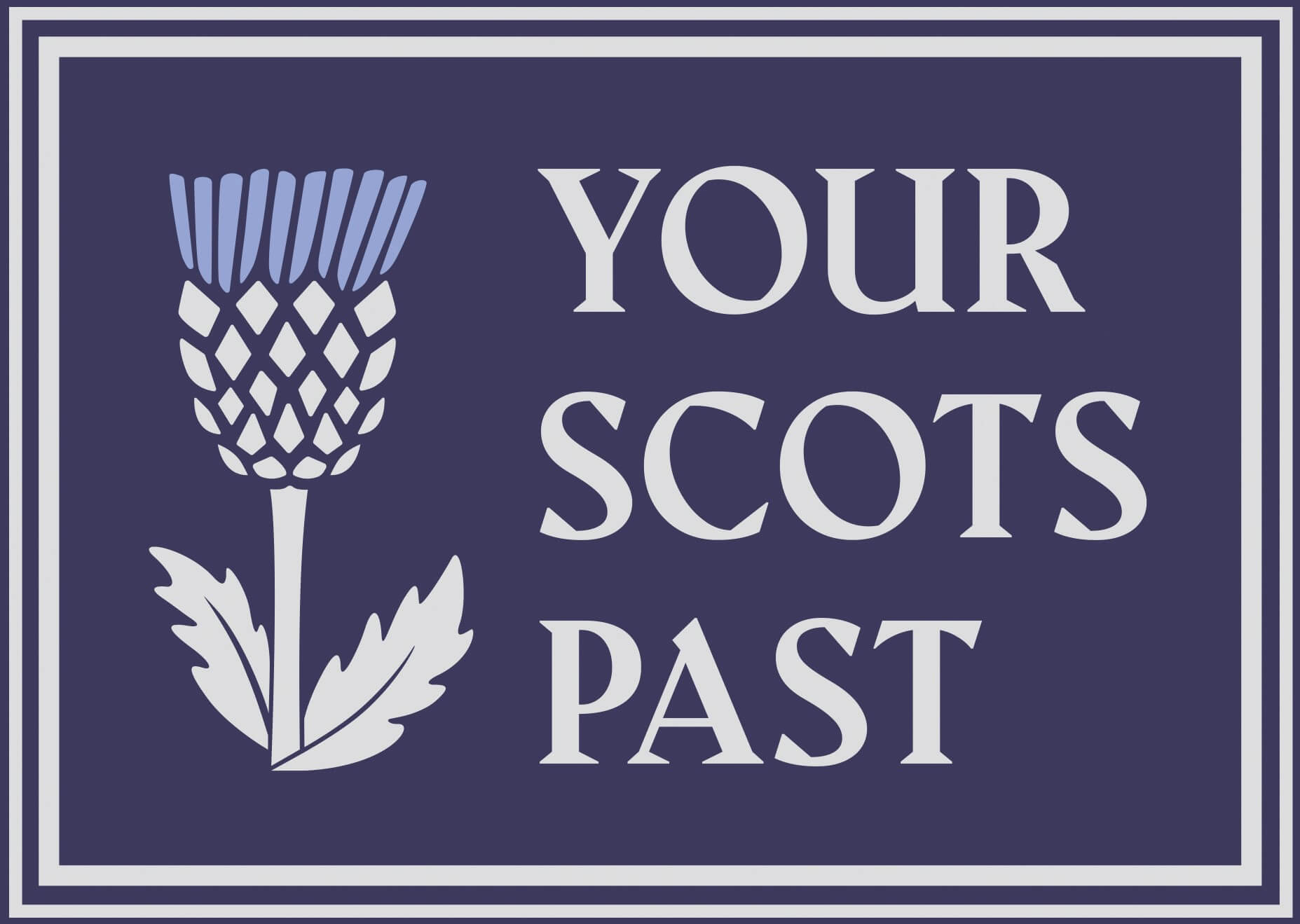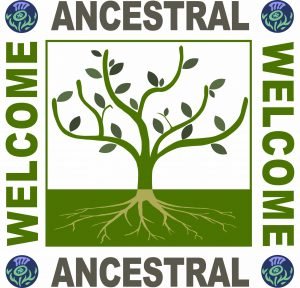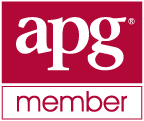Lifeline, the stunning Andy Scott sculpture (of Kelpies fame) greets me as I drive into Alloa on my way to the Family History and ScotlandsPeople Centre (or at least used to pre-Covid lockdown).

(image courtesy of www.clacks.gov.uk/culture/lifeline)
Situated in the centre of a busy roundabout the message is more pertinent today than ever. At around 8 meters tall Lifeline is in the form of a giant hand – representative of the gauntlet on Clackmannanshire’s coat of arms [1] and supports the figures of a woman and child.

This statue pays tribute to all the emergency services who more than ever over the last 15 months have put themselves in often life-threatening positions caring for others. The sculpture also incorporates words by Scottish poet Jim Carruth:
‘Life-line Reach Out, Hold, Close, Cradle, Cushion, Shelter, Protect, Support, Lift Up.’
This is one of a series of six sculptures dotted around the often overlooked county of Clackmannanshire, rich in majestic scenery and historical and cultural gems You can see details of the full Public Art Trail here
At Alloa Railway station stands another, titled ‘I can see for miles’ reflecting Alloa’s industrial heritage with an adult wearing a flat cap and a child looking positively into the future. Alloa like so many post-industrial towns in Scotland is navigating towards a new future.

During the Nineteenth and Twentieth centuries, Alloa was a thriving town with a range of industries including coal mining, brewing, glass making and spinning mills. The archives and local family history centre are housed inside The Speirs Centre, built as Alloa Public Baths and Gymnasium and gifted to the town by John Thomson Paton, Managing Director of John Paton, Son & Co. Ltd, KIlncraigs Spinning Mill.

Designed by John James Burnet & Campbell architects, it opened in April 1898. The building closed just under 100 years later in 1986, then reopened as a gymnastic centre in 1989 renamed The Speirs Centre, in memory of the Clackmannanshire boxer Tommy Speirs.

Scottish Renaissance & Moorish styles.
Patons & Baldwins was one of the biggest employers in Alloa. The business started as two separate companies: J & J Baldwin and Partners, founded in the late 1770s in Halifax, West Yorkshire, England, and John Paton Son and Co., founded in 1814 in Alloa. In 1920 the companies merged and diversified into spinning wool for home knitters, as well as publishing knitting patterns under the “Patons Rose” and “Baldwins Beehive” trademarks.
In 1961, the company was merged with J & P Coats Ltd. The Patons trademark is still in use today and the business is now owned by DMC.
If your family came from Alloa, then it’s very likely that one or ancestors were employed in Paton’s factory or the associated industries related to yarn manufacturing. The Clackmannanshire Archives acquired the factory records when it closed including the records of John Paton, Son & Co to 1920; J. & J. Baldwin & Partners and subsidiaries to 1920; Patons & Baldwins Ltd from 1920 to 1961; Fleming Reid & Co. from 1947 to 1960; Coats Paton Ltd from 1961 to 1986 and records of Coats Viyella plc from 1986 to 1999.

And outside the entrance door to the family history centre sits the Clackmannan Mill Bell which originally hung in the tower of John Paton & Son’s mill. Rung at the start and end of the working day it was bought around 1900 from a ship breaker’s yard in Glasgow. The inscription John C Wilson Founder Glasgow AD 1859 Nr 660 helped trace its origins. The bell was cast in October 1859 for the committee of the Kelvinside Temporary Free Church and was originally a turret bell.

Moving on from Alloa the sculpture trail continues past the Air Spirit and ends at Menstrie with Fox Boy in Nova Scotia Gardens.
‘Fox Boy’ is another forward-looking sculpture depicting a boy with a fox’s head and tail, dressed in trainers. Based on the tales of children who in the past kept foxes as pets the boy sits on top of a water wheel – linking the present to the past when water-powered mills were common in the hillfoot villages. In his right hand, the boy holds a Maple Leaf in recognition of Sir William Alexander, Earl of Stirling who was born at Menstrie Castle and who in 1621 was the chief founder of the colony of Nova Scotia in Canada.

Although the 2nd sculpture on the trail I’m rounding up this virtual tour with River Spirit, ‘the first of Andy Scott’s installations. Standing 6 metres high in the centre of Collylands roundabout, Fishcross she emerges from a tree trunk and in her foliage hands holds the meandering River Forth.
She gazes on the Ochil hills and with her arms held wide majestically represents the wealth of the county – nature, space and water – unchanged by industrialisation or decline. A beacon of hope for future generations.

The first sounds spoken
from the spring’s core
are of a new beginning
of people and place
From Watershed by Jim Carruth
- The arms show the red saltire on a gold field used by Bruce of Annandale and by Bruce of Clackmannan. This, the gauntlets and the motto recall a legend which tells how King Robert I, when on a visit to Clackmannan, left his glove (mannan) on a stone (clack), and how, when he sent his squire to fetch it, the latter said, “Look aboot ye here till I return”; ever since, the place has been known as “Look-Aboot-ye Brae”. The green field in the chief is for agriculture and the black pale on the silver ground recalls the long connection with the County of the family of Erskine, as represented by the Earls of Mar & Kellie.




